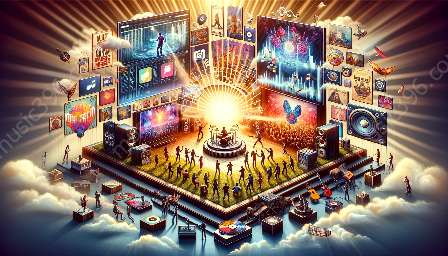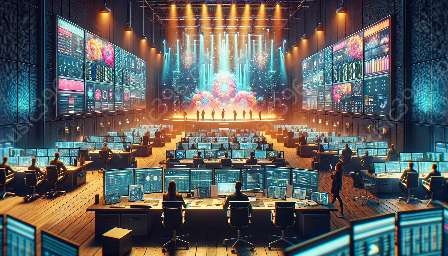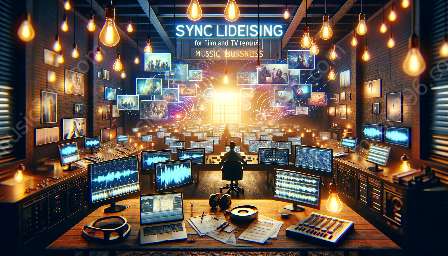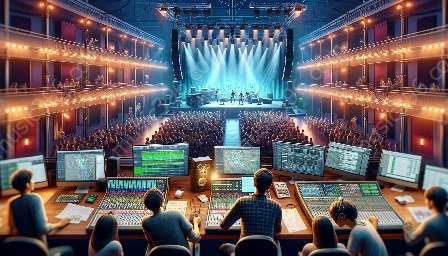Understanding the complexities of music licensing agreements is essential for anyone involved in the music business. In particular, understanding how these agreements vary for different platforms and media is crucial for musicians, producers, and industry professionals. This guide explores the intricacies of music licensing agreements, delving into the nuances of copyright law, different licensing models, and the impact of various platforms and media on music distribution.
Understanding Music Copyright and Licensing
Music copyright and licensing are interconnected elements that regulate the usage and distribution of musical works. Copyright law grants creators exclusive rights to their works, including the rights to reproduce, distribute, and perform their compositions. Licensing allows for the authorized use of copyrighted music in various contexts, such as film, television, streaming platforms, and live performances.
When it comes to music licensing, there are two primary rights involved:
- 1. Mechanical Rights: These rights pertain to the reproduction and distribution of musical compositions. They are often associated with the physical or digital reproduction of music, such as CDs, vinyl, and digital downloads.
- 2. Performance Rights: These rights relate to the public performance and communication of musical works. They come into play when music is played or performed in public spaces, on the radio, in concerts, or through digital streaming services.
Types of Music Licensing Agreements
Music licensing agreements come in various forms, each tailored to specific uses and platforms. Understanding these agreements is crucial for artists and rights holders seeking to monetize their music. The following are common types of music licensing agreements:
- 1. Sync Licensing: Sync licensing involves granting permission to use music alongside visual media, such as in films, TV shows, commercials, and video games. It typically encompasses both mechanical and performance rights.
- 2. Performance Licensing: Performance licensing pertains to the public performance of music in venues, on the radio, and through digital platforms. This includes licenses issued by Performing Rights Organizations (PROs) that collect and distribute royalties to rights holders.
- 3. Mechanical Licensing: Mechanical licensing allows for the reproduction and distribution of musical compositions. This type of license is often necessary for the production and distribution of physical recordings and digital downloads.
- 4. Master Use Licensing: Master use licenses are required for the use of specific sound recordings in visual media. This type of license is separate from sync licensing and involves obtaining permission from the owner of the sound recording.
Platform-Specific Considerations
Music licensing agreements vary based on the platforms and media through which music is distributed. Each platform has its own requirements, royalty structures, and user bases, influencing the terms of music licensing agreements. The following are some platform-specific considerations:
- 1. Streaming Services: Streaming platforms like Spotify, Apple Music, and Amazon Music require licensing agreements that determine how music is streamed, played, and monetized. These agreements involve intricate royalty calculations and distribution models based on play counts and user subscriptions.
- 2. Social Media and User-Generated Content Platforms: Platforms like YouTube, Facebook, and TikTok have specific licensing requirements for user-generated content that incorporates music. These platforms often engage in agreements with rights holders and music publishers to enable the use of music in user-generated videos and other content.
- 3. Broadcast Media: Television and radio broadcasters must obtain performance licenses from PROs and negotiate sync licensing agreements for the use of music in programming. These agreements can vary based on the scope of the broadcast and the specific uses of the music.
- 4. Live Performances and Concerts: Music licensing for live performances involves obtaining permission from rights holders and PROs for the public performance of musical works. Concert promoters and venue owners navigate the complexities of performance licensing to ensure compliance with copyright laws.
Impact of Different Media on Music Licensing
The evolution of media formats and consumption habits has profoundly influenced music licensing agreements. The rise of digital platforms, streaming services, and social media has introduced new considerations for rights holders and artists seeking to license their music. The following are some key impacts of different media on music licensing:
- Global Reach: Digital platforms and streaming services have extended the global reach of music, necessitating licensing agreements that account for international distribution and performance rights across various territories.
- Data and Analytics: The digital nature of streaming services provides intricate data and analytics, influencing how royalties are calculated and distributed. These platforms generate valuable insights that impact licensing negotiations and revenue streams.
- User-Generated Content: The proliferation of user-generated content on social media platforms has prompted new licensing models to enable the legal use of music in videos and other user-generated content. Rights holders navigate these agreements to monetize their music while respecting copyright laws.
Conclusion
Music licensing agreements are essential components of the music business, shaping how music is distributed, used, and monetized across various platforms and media. By understanding the intricacies of music copyright, different types of licensing agreements, and the impact of different media on music licensing, artists, producers, and industry professionals can navigate the complexities of the industry while protecting their rights and maximizing their earning potential.









































